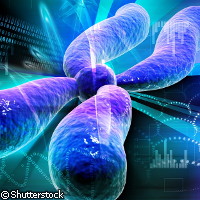Scientists shed light on genetic mutation
An international group of scientists has succeeded in making the first direct measurement of the general rate of genetic mutation in humans. The findings, published in the journal Current Biology, and the method developed by the researchers will fuel our understanding of the rates of mutation and could facilitate researchers' attempts to reduce mutations. According to the British and Chinese scientists, mutation is the source of genetic variation that could cause various diseases such as cancer, and provides a molecular clock for measuring evolutionary timescales. Improving our knowledge about mutation rates would contribute towards strengthening medical research and helping us understand human evolution. Improved measurements of mutation rates would also make the calibration of the evolutionary clock more effective. Past estimates of mutation rates were obtained from phenotypic observations or comparisons of homologous sequences among closely related species. In this latest research, the scientists sequenced the same piece of DNA (more than 10 million letters (nucleotides) from the Y chromosome) of 2 Chinese men separated by 13 generations, and counted the number of differences. The men were part of a family that has lived in the same village for centuries, and whose common ancestor lived 200 years ago. Researchers have noted that the Y chromosome has rare mutations and is passed unchanged from father to son. Mutations accumulate at a snail's pace over generations. The team confirmed 12 mutations, 8 of which had occurred in vitro and 4 in vivo (i.e. naturally over generations). According to them, the 2 Y chromosomes were identical at 10,149,073 of the 10,149,085 letters assessed. 'These 4 mutations gave us the exact mutation rate - 1 in 30 million nucleotides each generation - that we had expected,' said project leader Dr Chris Tyler-Smith of The Wellcome Trust Sanger Institute. 'This was reassuring because the methods we used - harnessing next-generation sequencing technology - had not previously been tested for this kind of research. New mutations are responsible for an array of genetic diseases,' he added. 'The ability to reliably measure rates of DNA mutation means we can begin to ask how mutation rates vary between different regions of the genome and perhaps also between different individuals.' Humans carry 100 to 200 new mutations in their DNA (single base changes in DNA sequence that vary from the sequence inherited from parents), said the team, adding that this is equal to 1 mutation in each 15 to 30 million nucleotides. It should be noted that the majority of these mutations are harmless and do not affect our well-being or appearance. 'The amount of data we generated would have been unimaginable just a few years ago,' explained Dr Yali Xue of The Wellcome Trust Sanger Institute in the UK, lead author of the study. 'But finding this tiny number of mutations was more difficult than finding an ant's egg in the emperor's rice store.'
Countries
China, United Kingdom



